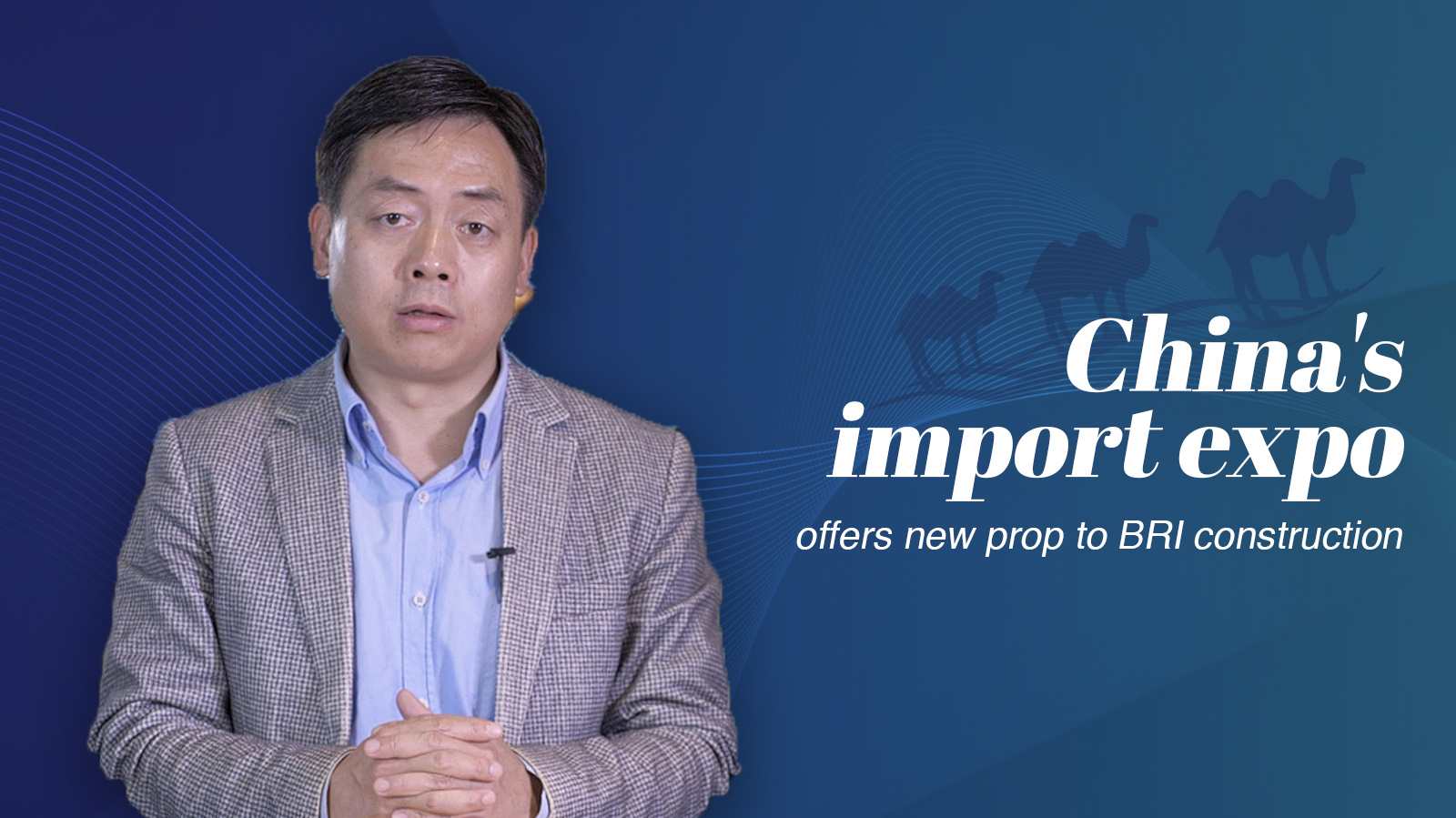
Opinions
16:39, 04-Nov-2018
Opinion: China's import expo offers new prop to BRI construction
Updated
15:34, 07-Nov-2018
Wang Yiwei
03:21

The first China International Import Expo starts to count down as it opens tomorrow with Chinese President Xi Jinping delivering remarks at the opening ceremony. Over 1,000 companies from 58 Belt and Road (BRI) countries will participate in the event to seek ways to achieve a more open and inclusive vision of world trade.
Vice Minister of Commerce Wang Bingnan said, "The expo will become another important prop for the joint construction of the Belt the Road Initiative, offering new opportunities for foreign countries to expand exports to China." But how exactly can BRI benefit from the expo and share China's development dividends, and how should understand China's investment in the BRI countries? Wang Yiwei, Director of the Institute of International Affairs at Renmin University, shares his insights with CGTN.
CGTN: What is the significance of the first CIIE to the cooperation of BRI countries?
Wang: This year marks the 40 years of reform and opening up of China.
The first China International Import Export Expo will be held in Shanghai, which sends a strong signal to the world that the Chinese economy is changing dramatically from being export-driven and FDI-driven to import and investment-driven, and focusing more on innovation and quality of life.
Most of the BRI countries are going to participate in the import expo. They will sell more products and machines, bring their ideas about life to China, and seek more cooperation opportunities with Chinese companies.
When the Chinese people focus more on the quality of life, not just a quantity, I think they give more chances to the BRI countries to reach the global balance. After the global financial crisis, the US and the West blame the overcapacity of the "Made in China" problem. Actually, this is a global problem. The import-export will show that China is responsible and willing to solve this problem that we will import more to contribute to the global balance. The BRI countries can sell their products to China and help their industrialization. And other Chinese companies can also find more opportunities to invest in the BRI countries at this expo.
So I think it's a very good platform to seek further cooperation between China and BRI countries and actually for Western countries as well. Their companies and their banks are very interested in the opportunities of cooperation that China's opening up and the BRI initiative will bring to them.
CGTN: Is China "debt trapping" BRI countries?
Wang: They (the Western countries) don't understand so much about China's reform and opening-up maybe. Firstly, China also borrowed huge money from the World Bank and Asian Development Bank. When the Chinese economy was taking off, there's no so-called debt trap problem in China.
Another example is China's high-speed railway. In the past ten years, we've built more than 25,000 kilometers of high-speed railway. But the Chinese economy still is rising rapidly. One kilometer of high-speed railway cost 200 million yuan (29.02 US million dollars). So 25,000 kilometers of railway cost five trillion yuan (730 billion US dollars). It's like the Mombasa–Nairobi Standard Gauge Railway. The reason is that the infrastructure building can bring long-term prosperity to the nation.
A simple comparison is the Chinese investment. It's not like China just give the chicken (investment) and then you eat the chicken with the soup, and then you will owe debt to China. But China gives the chicken and hope the chicken will lay more eggs and have more chicken and eggs in the future.
It has been proved that the building of infrastructure contributes to long-term development. It might take time for the Western world to understand.
Video editing: Liang Si

SITEMAP
Copyright © 2018 CGTN. Beijing ICP prepared NO.16065310-3
Copyright © 2018 CGTN. Beijing ICP prepared NO.16065310-3